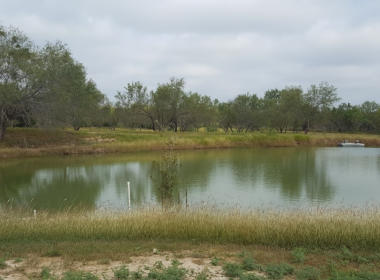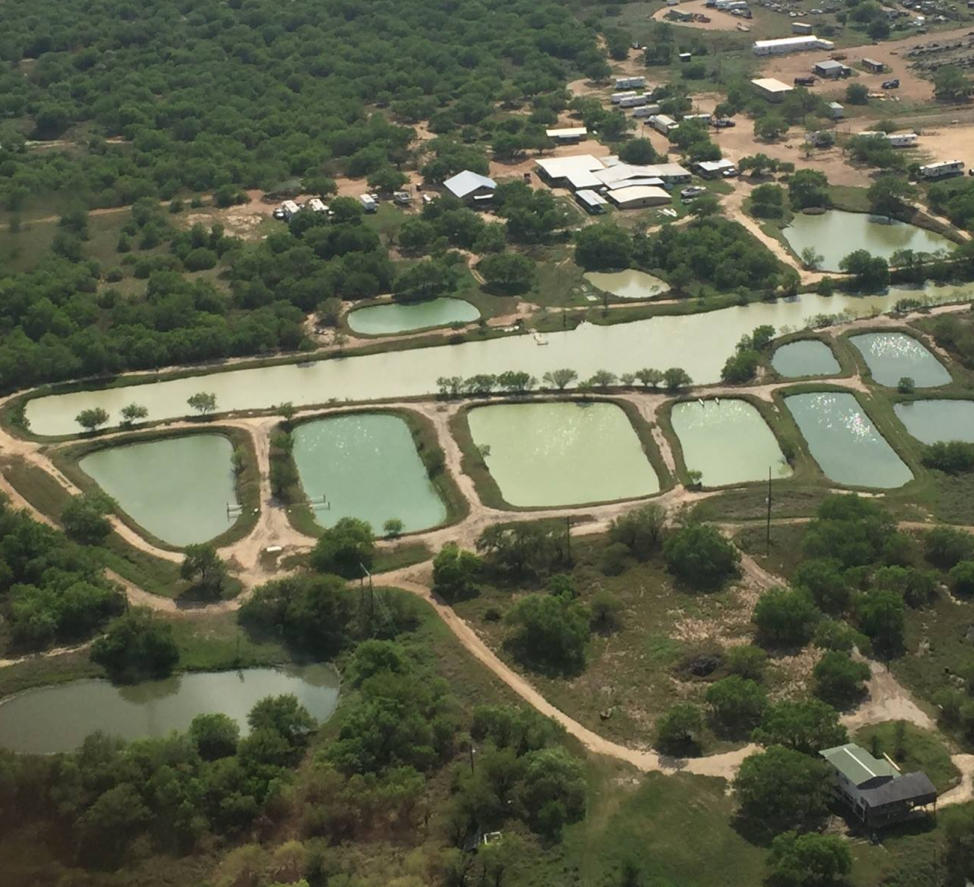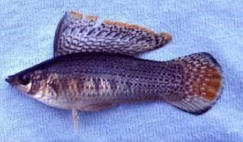



Cotulla Fish Hatchery & RV Park
Cotulla Fish Hatchery
For the past 25 years, we have been stocking tanks and ponds throughout South Texas. It is our goal for our customers to have the best fishing ponds possible through stocking and management. Our fish haul truck with insulated fish tanks can deliver fish to you or you can pick them up yourself and we will put them in transport bags. When transporting them yourself, the fish can travel for up to 4 hours. Our fish are raised outside in ponds and are well acclimated to the local temperatures and climate.
Serving: Cotulla, Corpus Christi, Laredo, San Antonio and surrounding areas
1531 S Main St, Cotulla, TX 78014





This is one of the tanks we allow our tenants to
fish out of. It is fully stocked with Bass, Catfish,
Bluegill and Tilapia. We allow our tenants to keep
two (2) eating sized fish per R.V space a day.
Advice & Tips
Here are some helpful tips and advice to make sure you get the most out of your
tank and stocking it.
Fertilizing the water can greatly increase pond forage. I use 11-37-0 in our ponds
and in the ponds we manage. This is 11% nitrogen and 37% phosphorus. All game
managers know the importance of getting phosphorus in deer feed in order to grow
large horns. Also, fertilizer jump-starts the food chain by causing a plankton growth
and turns water a greenish color. There are many benefits from this.
One of the most important things to remember when stocking is the
predator/prey relationship. Biologists recommend that a tank be stocked with
100 bass, 1000 bluegill, 1000 fathead minnows, 1000 mosquito minnows, 250-
350 redears and 1000-1500 mollies per surface acre. If catfish is another
desired fish then those should be stocked 250 per surface acre. The more
bluegill and other forage fish you stock per bass the quicker your bass should
grow to the lunkers that we all want to catch!
Fish & Descriptions
Mosquitos Minnows, or Gambusia Minnow, is the most versatile fish for
stocking in any pond or lake in South Texas. Their
primary diet is mosquito larva. It is an extremely hardy
and adaptable fish , known to survive in a wide variety
of temperatures and pHs. Females give birth to living
young and will produce several broods per summer.
The gestation period is 21 to 28 days.
Fathead Minnows
I have found that fathead minnows do not do as well as the
giant sail fin mollies. The sail fin mollies seem to be much
more tolerant of the salinity and warm water that we have
in South Texas. The females may spawn as many as 12
times in a single summer. Fathead minnows are often
raised as a bait fish, or as forage in hatchery production
ponds.
Giant Sailfin Mollies are an excellent food source
for largemouth bass. They are extremely hardy and can
survive in poor water qualities. Sailfin Mollies produce
broods of 10-140 live young, depending upon maturity
and size. A single female may give birth on multiple
occasions throughout the year. They feed primarily
upon algae and other plant materials, although they will consume a number of aquatic
invertebrates including the larvae of mosquitoes.
Copper nose Bluegills have a very high reproductive
potential. They will spawn when water reaches about 70
degrees and spawning may peak in May or June. They
reproduce about 3-5 times a year and will produce a lot of
forage for your bass. Up to 50% of their diet may consist of
Midge Larvae. They have been introduced widely as a
sport or forage fish.
Channel Catfish will spawn only once a
year. Channel "cats" are cavity nesters,
meaning they lay their eggs in crevices,
hollows, or debris, to protect them from swift
currents. Sexual maturity is reached in two or
three years in captivity, whereas data from natural populations indicates channel
catfish in Texas reach sexual maturity in 3-6 years.
Large Mouth Bass only spawn once a year. This fish
commonly feeds on fish known as "forage" fish. A bass has
to eat 9.5 lbs to 15 lbs to gain one pound. They are a
predator fish so the harder they have to work for their food
the more they will have to eat in order to gain weight. The
bass have one of the worst conversion rates.




At the Fish Hatchery we carry many different types of fish including Bass, Catfish, Copper nose
Bluegill, Giant Sailfinn Mollies, Mosquito Minnows and Fathead Minnows.
We limit our fish sales to early mornings starting the middle of June through the second week in
October. The reason we do this is because the water in the tanks of South Texas gets very hot on the
surface and it is very difficult to move fish at that time because hot water does not hold oxygen.


Fish Hatchery
Cotulla, Texas
A fish hatchery serves as a controlled environment for breeding and nurturing fish and other aquatic creatures. It plays a crucial role in wildlife conservation by aiding in the restoration of wild populations and promoting sustainable recreational fishing practices. The hatchery generates larvae and young fish for transfer to aquaculture facilities, where they continue to grow until they reach maturity for harvesting. This process offers several advantages to the industry. Here at the Cotulla Fish Hatchery & R.V Park we pride ourselves in making sure our customers have a pleasant and relaxing stay. We strive to make sure our tenants are as comfortable as possible. No fishing permit is required for our tenants to fish. We do not have public fishing- only for our tenants. Tenants can fish until dusk Come visit us for a unique experience at Cotulla Fish Hatchery. Call us today for your next great adventure! 830-879-2393
Cotulla Fish Hatchery & RV Park




Fish Hatchery
Cotulla, Texas
A fish hatchery serves as a controlled environment for breeding and nurturing fish and other aquatic creatures. It plays a crucial role in wildlife conservation by aiding in the restoration of wild populations and promoting sustainable recreational fishing practices. The hatchery generates larvae and young fish for transfer to aquaculture facilities, where they continue to grow until they reach maturity for harvesting. This process offers several advantages to the industry. Here at the Cotulla Fish Hatchery & R.V Park we pride ourselves in making sure our customers have a pleasant and relaxing stay. We strive to make sure our tenants are as comfortable as possible. No fishing permit is required for our tenants to fish. We do not have public fishing- only for our tenants. Tenants can fish until dusk Come visit us for a unique experience at Cotulla Fish Hatchery. Call us today for your next great adventure! 830-879-2393Cotulla Fish Hatchery
For the past 25 years, we have been stocking tanks and ponds throughout South Texas. It is our goal for our customers to have the best fishing ponds possible through stocking and management. Our fish haul truck with insulated fish tanks can deliver fish to you or you can pick them up yourself and we will put them in transport bags. When transporting them yourself, the fish can travel for up to 4 hours. Our fish are raised outside in ponds and are well acclimated to the local temperatures and climate.
Serving: Cotulla, Corpus Christi, Laredo, San Antonio and
surrounding areas
1531 S Main St, Cotulla, TX 78014




This is one of the tanks we allow our tenants to
fish out of. It is fully stocked with Bass, Catfish,
Bluegill and Tilapia. We allow our tenants to keep
two (2) eating sized fish per R.V space a day.
Advice & Tips
Here are some helpful tips and advice to make
sure you get the most out of your tank and
stocking it.
Fertilizing the water can greatly increase
pond forage. I use 11-37-0 in our ponds and in
the ponds we manage. This is 11% nitrogen and
37% phosphorus. All game managers know the
importance of getting phosphorus in deer feed in
order to grow large horns. Also, fertilizer jump-
starts the food chain by causing a plankton
growth and turns water a greenish color. There
are many benefits from this.
One of the most important things to
remember when stocking is the predator/prey
relationship. Biologists recommend that a
tank be stocked with 100 bass, 1000 bluegill,
1000 fathead minnows, 1000 mosquito
minnows, 250-350 redears and 1000-1500
mollies per surface acre. If catfish is another
desired fish then those should be stocked
250 per surface acre. The more bluegill and
other forage fish you stock per bass the
quicker your bass should grow to the lunkers
that we all want to catch!
Fish & Descriptions
Mosquitos Minnows, or Gambusia
Minnow, is the most versatile fish for stocking
in any pond or
lake in South
Texas. Their
primary diet is
mosquito larva. It
is an extremely hardy and adaptable fish ,
known to survive in a wide variety of
temperatures and pHs. Females give birth to
living young and will produce several broods per
summer. The gestation period is 21 to 28 days.
Fathead Minnows
I have found that
fathead minnows
do not do as well
as the giant sail
fin mollies. The
sail fin mollies
seem to be much
more tolerant of the salinity and warm water that
we have in South Texas. The females may
spawn as many as 12 times in a single summer.
Fathead minnows are often raised as a bait fish,
or as forage in hatchery production ponds.
Giant Sailfin Mollies are an excellent food
source for largemouth bass. They are extremely
hardy and can survive in poor water qualities.
Sailfin Mollies
produce broods of
10-140 live young,
depending upon
maturity and size. A
single female may
give birth on multiple occasions throughout the
year. They feed primarily upon algae and other
plant materials, although they will consume a
number of aquatic invertebrates including the
larvae of mosquitoes.
Copper nose Bluegills have a very high
reproductive potential.
They will spawn when
water reaches about 70
degrees and spawning
may peak in May or
June. They reproduce
about 3-5 times a year
and will produce a lot of forage for your bass. Up
to 50% of their diet may consist of Midge
Larvae. They have been introduced widely as a
sport or forage fish.
Channel Catfish will spawn only once a
year. Channel "cats" are cavity nesters,
meaning they lay their eggs in
crevices, hollows, or
debris, to protect
them from swift
currents. Sexual
maturity is reached in two or three years in
captivity, whereas data from natural populations
indicates channel catfish in Texas reach sexual
maturity in 3-6 years.
Large Mouth Bass
only spawn once a
year. This fish
commonly feeds on fish
known as "forage" fish.
A bass has to eat 9.5
lbs to 15 lbs to gain one pound. They are a
predator fish so the harder they have to work for
their food the more they will have to eat in order
to gain weight. The bass have one of the worst
conversion rates.




At the Fish Hatchery we carry many different
types of fish including Bass, Catfish, Copper
nose Bluegill, Giant Sailfinn Mollies, Mosquito
Minnows and Fathead Minnows.
We limit our fish sales to early mornings
starting the middle of June through the second
week in October. The reason we do this is
because the water in the tanks of South Texas
gets very hot on the surface and it is very
difficult to move fish at that time because hot
water does not hold oxygen.


Cotulla Fish Hatchery
& RV Park
Cotulla Fish Hatchery & RV Park



















